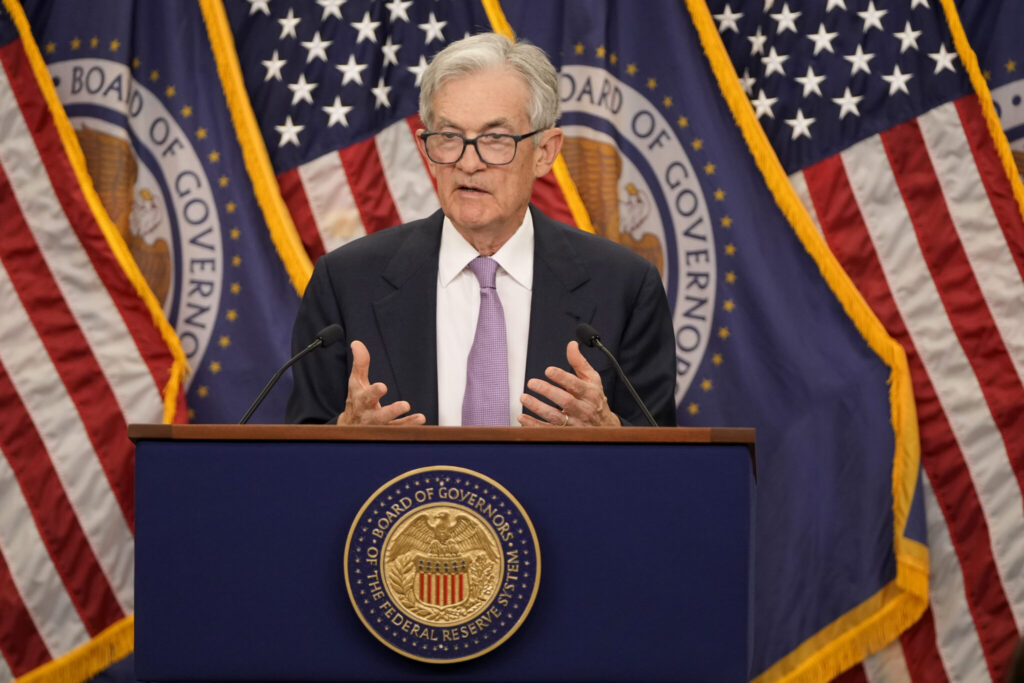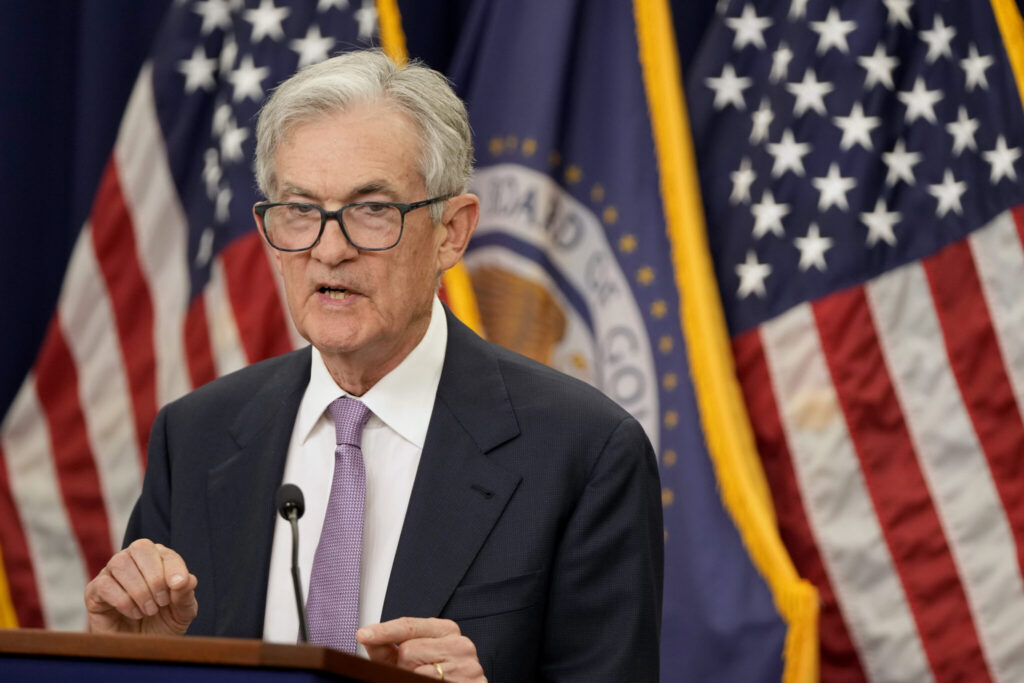Federal Reserve/ interest rate cut/ inflation control/ Jerome Powell/ U.S. economy/ post-election economic uncertainty/ Donald Trump/ monetary policy/ Newslooks/ WASHINGTON/ J. Mansour/ Morning Edition/ In response to easing inflation, the Federal Reserve cut its key interest rate by a quarter-point, setting it at 4.6%. Fed Chair Jerome Powell emphasized the Fed’s goal to balance job market support with inflation control amid the post-election climate. Although Trump’s win raises questions about future Fed policy, Powell reaffirmed the Fed’s independence, signaling confidence in continued economic stability.

“Federal Reserve Interest Rate Cut Quick Looks”
- Quarter-Point Rate Cut: The Fed cut its benchmark rate to 4.6% to support job growth amid moderate inflation.
- Post-Election Focus: Trump’s win adds complexity, with proposed tariffs and policies potentially raising inflationary pressure.
- Fed’s Independence Reaffirmed: Powell stated he would not resign if asked by Trump, emphasizing the Fed’s legal autonomy.
- Mixed Economic Signals: While consumer spending is healthy, hiring has slowed, suggesting caution in future rate cuts.
- Investor Impact: Rising Treasury yields may limit the effect of lower Fed rates, as borrowing costs remain high.
Fed Cuts Key Rate by Quarter-Point as Trump Prepares for Office
Deep Look
The Federal Reserve cut its key interest rate by a quarter-point, lowering it to 4.6% in a move reflecting easing inflation pressures and a shifting focus on the labor market. Fed Chair Jerome Powell addressed the media after the announcement, stating that the rate cut aligns with the Fed’s goals to support job growth while keeping inflation under control, even as new economic challenges emerge under President-elect Donald Trump’s administration.
The rate cut follows a larger half-point reduction in September, bringing the Fed’s benchmark rate down from its recent peak of 5.3%, the highest level in four decades. This gradual reduction marks a pivot by the Fed as it continues to combat inflation, which has dropped from a 9.1% high in mid-2022 to a manageable 2.4% in September. While inflation remains slightly above the Fed’s target of 2%, Powell expressed confidence that it will stabilize at that level over time.
During the press conference, Powell dismissed speculation that Trump’s presidency would influence the Fed’s short-term interest rate decisions. Asked if Trump’s return might lead to political pressure on Fed policies, Powell reaffirmed the institution’s independence, saying, “in the near term, the election will have no effects on our [interest rate] decisions.” He also clarified that he would not resign if asked to, asserting that the president lacks legal authority to fire or demote him.
This message comes amid ongoing debate about the Fed’s role in a time of political change. Trump has previously criticized Powell for raising rates to control inflation, suggesting he should have a voice in the Fed’s decisions as president. Powell, however, emphasized that the Fed is committed to making independent, data-driven decisions regarding interest rates, regardless of political shifts.
The rate cut represents an effort to counterbalance mixed economic signals. The Fed’s statement acknowledged that unemployment has risen slightly but remains low overall. The U.S. economy has shown resilience, with growth near 3% over the past six months and strong consumer spending, largely driven by higher-income households. Despite this, hiring has slowed, signaling that the Fed’s focus may shift slightly toward sustaining employment gains, especially as global economic uncertainty and rising debt levels persist.
Economic projections for next year indicate the Fed may pursue fewer rate cuts than initially planned. After September’s half-point cut, Fed policymakers hinted at smaller cuts in November and December, followed by four reductions in 2025. Yet with the economy stabilizing and Wall Street forecasting faster growth, many analysts predict a reduced need for further rate cuts. Deutsche Bank economist Matthew Luzzetti noted that the Fed “has no need to be in a hurry” to lower rates significantly given the current economic data.
As Trump prepares for his second term, investors are adjusting expectations for inflation and growth. Financial markets have responded by pushing up Treasury yields in anticipation of higher inflation and larger federal budget deficits under Trump’s administration. The yield on the 10-year Treasury bond, a key driver of mortgage rates, has risen to 4.36% from 3.62% in mid-September. Trump’s policy proposals, including a potential 10% tariff on all imports and higher taxes on goods from China and Mexico, are likely to drive inflation, which could complicate the Fed’s plans for future rate cuts.
Goldman Sachs economists estimate that Trump’s proposed tariffs could push inflation back up to around 2.75% to 3% by mid-2026. This trajectory may prompt the Fed to slow its rate-cutting plans if inflation rises beyond expectations, particularly given the solid economic growth and resilient consumer spending reported in recent quarters.
The Fed’s decision comes as the central bank carefully monitors broader economic impacts, including trends in Treasury yields, which influence borrowing costs for consumers and businesses. Higher yields have offset some of the Fed’s rate cuts, limiting their intended effects on consumer lending and housing. Mortgage rates and other interest-sensitive sectors may remain elevated, making it harder for the Fed’s lower rates to stimulate the economy.
In Thursday’s press conference, Powell acknowledged the financial challenges that persist for many Americans, despite the inflation drop. Responding to concerns that high prices have left some Americans struggling, Powell explained that the Fed’s goal is to foster a stable economic environment where “wages are moving up, but at a sustainable level.” He added, “It takes some years of real wage gains for people to feel better… Inflation has come way down, the economy is still strong, but it will be some time before people regain their confidence.”
As the Fed navigates the uncertainties ahead, it remains committed to a balanced approach, ensuring both stable inflation and a healthy labor market. With Trump’s economic policies expected to introduce new challenges, the Fed will likely continue to adjust its approach to meet its dual mandate in a changing economic landscape.







